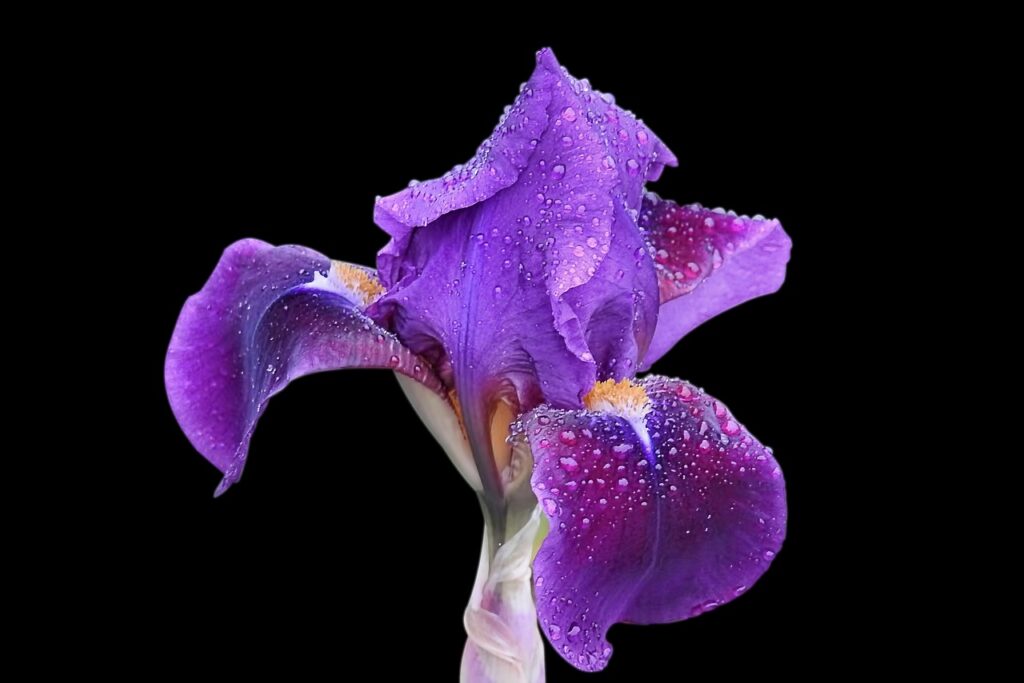Irises are beloved for their stunning, colorful blooms and are a favorite among gardeners. These hardy perennials are relatively easy to grow and care for, making them a great addition to any garden. Here’s a comprehensive guide on how to grow irises, from selecting the right variety to ensuring they thrive year after year.
Choosing the Right Iris Variety
There are several types of irises, each with unique characteristics:
Bearded Iris: Known for their fuzzy “beards” on the falls (lower petals), these are among the most popular.
They come in a wide range of colors and sizes.
Siberian Iris: These have tall, slender foliage and elegant flowers. They are more tolerant of wet conditions than bearded irises.
Japanese Iris: Known for their large, flat blooms, these irises thrive in moist soil and are perfect for planting near water features.
Dutch Iris: Often grown as annuals, these irises are ideal for cutting gardens and come in beautiful shades of blue, yellow, and white.
Planting Irises
Timing: The best time to plant irises is late summer to early fall, allowing them to establish roots before winter.
Location: Choose a sunny spot with well-drained soil. Irises need at least 6 hours of sunlight per day to bloom well.
Soil Preparation: Irises prefer neutral to slightly acidic soil. Improve soil drainage by adding sand or compost if necessary.
Planting Depth: For bearded irises, plant the rhizomes so that the top is just above the soil surface. For other types, plant the bulbs or rhizomes at a depth of about 1 to 2 inches.
Caring for Irises
Watering: Water newly planted irises regularly to help them establish. Once established, they are quite drought-tolerant. However, avoid overwatering, as this can lead to root rot.
Fertilizing: Apply a balanced fertilizer in early spring and again after the irises have bloomed. Avoid high-nitrogen fertilizers, as these can promote leaf growth at the expense of flowers.
Mulching: Apply a light mulch to help retain moisture and keep weeds at bay. Be careful not to cover the rhizomes, as this can cause rot.
Pruning and Maintenance
Deadheading: Remove spent flowers to encourage more blooms and prevent seed formation.
Dividing: Every 3 to 4 years, divide the rhizomes to prevent overcrowding and promote healthy growth. This is best done in late summer. Cut back the foliage to about 6 inches and dig up the clumps. Separate the rhizomes, ensuring each division has a fan of leaves and healthy roots.
Pest and Disease Control: Keep an eye out for pests like iris borers and diseases such as bacterial soft rot. Remove and destroy affected plants to prevent the spread of disease.
Overwintering
In colder climates, provide a layer of mulch to protect the rhizomes from freezing. In spring, remove the mulch to allow new growth to emerge.
Enjoying Your Irises
Irises can be a stunning addition to your garden, providing vibrant colors and intricate blooms. By following these tips, you can enjoy a beautiful iris display year after year. Whether you’re a seasoned gardener or a novice, growing irises can be a rewarding and enjoyable experience.
Troubleshooting Common Issues with Irises
Even though irises are generally low-maintenance, gardeners might occasionally encounter some issues. Here’s how to address common problems:
Poor Blooming
Insufficient Sunlight: Ensure your irises receive at least 6 hours of direct sunlight daily.
Overcrowding: Irises may not bloom if they’re too crowded. Divide them every 3-4 years to give them room to grow.
Improper Planting Depth: Bearded irises, in particular, should have their rhizomes just at or slightly above the soil surface. If buried too deeply, they may not bloom.
Nutrient Deficiency: Avoid high-nitrogen fertilizers. Use a balanced fertilizer to encourage blooming.
Yellowing Leaves
Water Issues: Overwatering or poor drainage can lead to yellowing leaves. Ensure the soil is well-drained and adjust watering practices.
Pests: Check for signs of pests like iris borers, which can cause yellowing. Treat with appropriate pest control measures.
Rhizome Rot
Fungal Infections: Poor drainage and overly wet conditions can lead to fungal infections. Improve drainage and avoid overwatering.
Proper Spacing: Ensure good air circulation around the plants to reduce the risk of rot.
Iris Borers
These pests can be quite destructive. They bore into the rhizomes, causing extensive damage. Signs include chewed leaves and soft, mushy rhizomes.
Inspect Regularly: Check plants in early spring for signs of borer activity.
Remove Affected Areas: Cut out and destroy any affected parts of the plant.
Insecticides: Use an appropriate insecticide if necessary, following label instructions carefully.
Designing with Irises
Irises can be used in various ways to enhance your garden:
Borders and Beds: Plant irises in borders or mixed beds for a burst of color in late spring to early summer.
Water Features: Japanese and Siberian irises thrive near ponds or streams, adding elegance to water features.
Cut Flowers: Many irises, especially Dutch irises, make excellent cut flowers. Harvest them when the blooms are just starting to open.
Companion Planting
Consider pairing irises with other perennials that complement their growth habits and blooming periods. Good companions include:
Peonies: These provide a beautiful contrast with their large blooms and similar blooming period.
Daylilies: Their later bloom time extends the flowering season in the garden.
Catmint: The soft, blue flowers and mounded habit of catmint provide a lovely foil to the upright iris blooms.
Propagation
Division: The most common method is division, as described earlier. It’s straightforward and ensures the new plants are clones of the parent.
Seeds: Growing irises from seeds is less common and more time-consuming but can be rewarding for hybridizers. Collect seeds from pods after the flowers fade and plant them in well-drained soil. Note that seedlings may take several years to bloom.
Growing irises can be a delightful endeavor for gardeners of all levels. With their striking flowers and relatively easy care requirements, irises can add beauty and charm to any garden. By following the tips outlined in this guide, you can cultivate healthy, vibrant irises that will reward you with their stunning blooms for many years to come.






